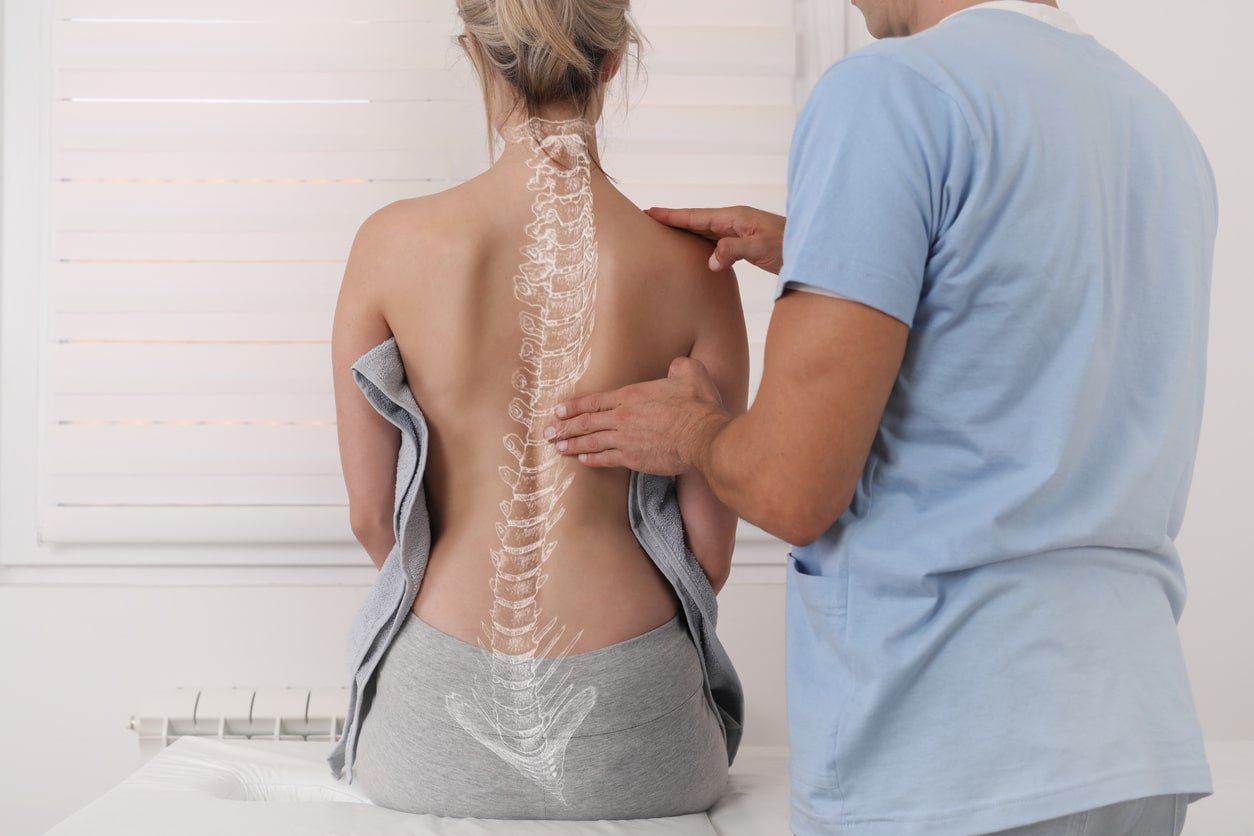During a recent review of spinal fusion cases at a client, we found coding issues on the cases in which both an anterior interbody fusion, anterior open approach was done on one day and two days later, the patient was brought back for a posterior fusion, posterior open approach. Below are some of the recommendations we made along with education explanations.
Anterior Interbody Fusion and Posterior Fusion and Approaches
In many of the cases we reviewed, the surgeon performed an anterior OPEN approach dissecting down to the anterior spine. Sometimes this was an OLIF or Oblique Lateral approach which is an anterior approach. Many times robotics or a robot is used AND stereotactic navigation are used and both of these codes should be reported on this day. We will review those later in this tip. The interbody is accessed, disc is removed and interbody fusion device is placed. At times, anterior instrumentation may be done. The patient’s access is closed. In the cases we reviewed, two different surgeons worked on the case, one to perform the approach down to the intervertebral disc, and another surgeon did the actual laminectomy, and access to the interbody, disc removal and fusion. So coders must be sure to review BOTH operative reports for the full details of this procedure.
Then, two days later, a second surgery was done where the approach was posterior OPEN, dissecting down to the vertebra. Again, there may be the use of stereotactic navigation in this procedure and if used, it should be coded. Also check to see if CT is being used with navigation.
Total vs Partial Removal of Intervertebral Disc
As coders know, if the entire disc is removed, this is coded to “Resection” root operation for the site of the disc removal i.e., cervical, cervicothoracic, thoracic, thoracolumbar, lumbar, lumbosacral. If there is not documentation of total removal of the intervertebral disc, then code to root operation “Excision.”
Decompression
A decompression of a nerve root, spinal cord OR BOTH may or may not be done during a spinal fusion. Identify the level released – Cervical, Thoracic, Lumbar, Sacral and code ONCE per level release. Use root operation “Release” even if lamina or disc is excised because the coder must code for the objective, or intent, not how the surgeon does the procedure. Key terms to look for are: Diagnoses such as stenosis, claudication or myelopathy; Procedure terms such as: laminectomy, decompression, release of nerve or roots. Sometimes the surgeon will list in the procedures that a decompression is to be done but the operative report may not document it. In that case it is not coded. If both spinal nerves and spinal cord (such as thecal sac or central cord) are released, code both as these are separate body parts – see CC1Q2019 P.28.
Stereotactic Navigation
In the cases we reviewed, most of the time, stereotactic navigation was used. This is code 8E0WXB-Computer Assisted Procedure of Trunk Region, with the last character value telling us what the stereotactic navigation was used with:
F – With Fluoroscopy
G – With Computerized Tomography (CT)
H – With Magnetic Resonance Imaging (MRI)
Z – No Qualifier
We found upon review that these surgeons were using stereotactic navigation WITH CT however coders were erroneously assigning “Z-No Qualifier” as the last character in the code. Here is how it was written: Surgeon will list this in the Procedures Performed: “Use of stereotactic computer assisted navigation” Within the operative note the coder will see: “A pin was placed in the left iliac crest. An O-arm was brought in and a 3D CT spin was performed. This was merged with the patient’s preoperative CT. After registration of the navigated instruments were performed, exposure was performed by Dr.—-.” As the coder can see, the use of 3D CT was done with the stereotactic navigation. This would be coded 8E0WXBG Computer Assisted Procedure of Trunk Region, with Computerized Tomography.
AGAIN, if this is used on two separative operative procedure dates, the coder would report this code TWICE with the applicable date. Many times the surgeon uses the same type of guidance on both anterior fusions and posterior fusions.
Coders asked about the use of fluoroscopy, and if 7th character F – With Fluoroscopy should be used. In most cases, fluoroscopy is used in many of these surgeries, but not directly with the stereotactic navigation as the operative note excerpt above states with the 3D CT. So coders must look for what imaging is used with the use of stereotactic navigation. Both stereotactic navigation with 3D CT and separate fluoroscopy can be used on the same case. If the documentation does not document clearly what the stereotactic navigation is being used with, the coder can query or ask to have physician education on the documentation of this procedure in its entirety. Please refer to the links in the References section below.
Robotic or Robot Assistance
In some of the cases we reviewed, a robot was used during the anterior open interbody fusion. The surgeon does not always use a robot. One example is the Mazor Stealth edition. The surgeon actually documented this as a procedure in the list on the operative report. Some coders wrongly assume that if a robot is issued, it is not open but a percutaneous endoscopic approach. This would be incorrect if the surgery is open where the surgeon dissects down to the level of the vertebra. The approach should match what the approach is for the surgery, remembering that if the surgeon dissects down to the body site of the surgical procedure, it is an open approach. Here is an example of robot use: “3. Use of Mazor robotics with stealth navigation for pedicle screw guidance and placement. Greater than 30 minutes was spent preplanning for screw trajectory and placement with preoperative CT scan.”
“The robot was then brought and attached to the table in a sterile fashion. A pin was placed in the right iliac crest and attached to the robotic arm. The appropriate registration processes were then performed with the robot to register the patient’s position in three dimensional space. The robotic image was then merged with the patient’s preoperative CT scan and stealth navigation.
The robotic arm was then used to mark our preoperatively planned incisions. The skin incisions were sharply incised and posterior instrumentation was performed on the left side first.Under guidance of the robotic arm, the left S1 pedicles were cannulated and tapped. Pedicle screw was then placed under robotic guidance. The robotic arm then moved to the right side of the patient and the right S1 pedicle was cannulated and tapped under robotic guidance. Pedicle screw was then placed in the right S1 pedicle under robotic guidance. The incision was then extended to include the L4 and L5 screw head”
The ICD-10-PCS code for robotic assisted procedure on the spine is 8E0W0CZ – Robotic Assisted Procedure of Trunk Region, Open Approach. (Check each surgery for correct approach)
BMP vs Bone Putty
Sometimes surgeons use BMP which is bone morphogenic protein in their fusion surgeries. BMP is a protein that can stimulate the production of bone and cartilage. A brand name coders may see is INFUSE. BMP is considered allograft. **Coding BMP is optional depending on the facility (CC1Q2018 p.8). Many facilities report this code, 3E0U0GB, Introduction of recombinant bone morphogenetic protein into joints, open approach. Other facilities only report it if it is the only graft used, and not when it is mixed with other graft materials including autograft and allograft.
BONE PUTTY is different. It is NOT BMP. Bone putty can also be called DBM (demineralized bone matrix) or one example, “Bone Graft Putty IFactor – East Coast Biologics” etc. There are different kinds, however this is NOT coded as they are mixed with autograft or allograft and ICD-10-PCS does not provide a separate code for these. Coders must not confuse DMB with BMP.
We hope this coding tip has helped you in coding spinal fusions!
References
https://www.ncbi.nlm.nih.gov/pmc/articles/PMC7548831/ Discussed Stereotactic Navigation with CT
https://www.wheelessonline.com/issls/section-11-chapter-14-navigation-in-spine-surgery/ Comparison between various navigation systems and imagine acquisition
https://www.brainlab.com/journal/step-by-step-guide-to-image-registration-for-spine-surgery/
HIA Spinal Guide
AHA Coding Clinic
ICD-10-PCS Official Guidelines for Coding and Reporting
The information contained in this post is valid at the time of posting. Viewers are encouraged to research subsequent official guidance in the areas associated with the topic as they can change rapidly.






